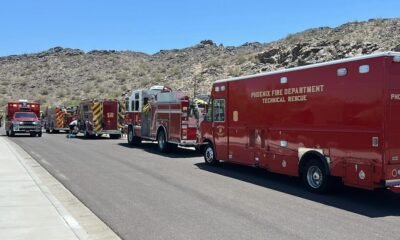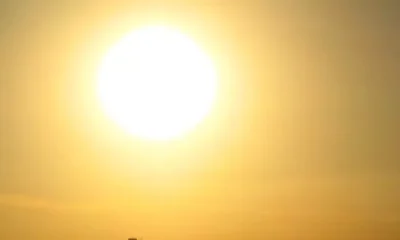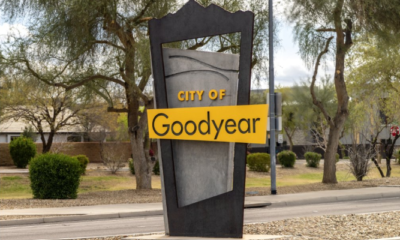arizona
Relentless Heat Scorches the West Despite Drought Relief

While California and Nevada are nearly drought-free, experts caution that the West will still face extreme heat and wildfire risks in the coming months.
Scientists from the National Oceanic and Atmospheric Administration (NOAA) highlighted during a webinar on Monday that the ongoing heat events pose significant threats to vulnerable communities. This is despite the relatively positive water supply outlook for the region.
Joseph Casola, Regional Climate Services Director at NOAA’s National Centers for Environmental Information, described the drought outlook for California and Nevada as “relatively rosy.” Most areas are free from drought, except for some pockets along the California-Oregon border. Many reservoirs in California are above their average capacity due to late-spring rain and snowstorms.
In contrast, Arizona struggles with low water levels in the Colorado River’s main reservoirs. Lake Powell stands at 42% capacity, while Lake Mead is at 32%. Though these levels are better than in past years, they remain concerning.
Another worry is that extreme heat waves could accelerate the onset of dry conditions usually seen in the fall. “We’ve broken numerous records,” Casola said, noting that Redding hit an all-time high of 119 degrees in early July. Stockton also reached 111 degrees over the Fourth of July weekend, beating a 1905 record.
California has already seen over 270,000 acres burned, according to Cal Fire’s latest report. The fire risk remains high through August and September, with no significant relief expected until October.
The possibility of a La Niña pattern, often associated with cooler but drier climate trends in the western U.S., has also emerged. Casola noted there’s an elevated chance of La Niña developing by September or October, although there is a one in three chance it may not occur at all.
Jiabao Wang from the Scripps Institution of Oceanography said weather systems in the tropics are being closely monitored to predict a potential La Niña. Animations suggest a shift within four to seven weeks, pending the tropical convection patterns and oceanic conditions.
For now, temperatures across the West are expected to remain around normal for the next two weeks, but California will continue battling the dangers of extreme heat. The National Weather Service’s Sacramento office announced forecasts of widespread triple-digit heat in the north and Central Valley through Wednesday.
Meteorologists noted that major heat risks will surge on Tuesday with overnight lows mainly in the 70s throughout the Central Valley and 80s in the foothills. Additionally, monsoonal moisture could lead to rain showers and thunderstorms in the Sierra Nevada range until early Thursday.
The northern Sacramento Valley is particularly at risk for extreme heat, with highs potentially reaching 112 degrees this week due to a weakening delta breeze and limited overnight cooling.


















